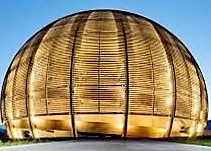Speaker
Description
An analysis of the co-occurrence of several nuclear mechanisms responsible for generating Sn p-nuclei for photon and proton energies up to 25 MeV was conducted. The astrophysical temperature during nucleosynthesis lies in the region of 0.01<T9<10 (that nearly corresponds to incident particle energies < 1 MeV). There is one p-nucleus among those considered, 112Sn, that is bypassed by a low energy p-process, 113Sn(p,2n)112Sn. Other Sn isotopes are mainly produced via s-processes. The p, r, and rp processes can occur in hot astrophysical plasmas at higher incident energies.
Taking into account all reaction types, contributions of different nuclear reaction mechanisms into cross-sections values and Sn p-nuclei yields for each process are theoretically evaluated. On the basis of work done, the evaluation of different processes contribution (compound nucleus, direct capture etc.) on proton radiation capture rates are theoretically described applying statistical model Hauser – Feshbach.
For each reaction type, an analysis is performed to estimate the weight assigned to different nuclear reaction mechanisms to cross-section values and p-nuclei yields. Using a statistical model Hauser-Feshbach, this research will explore how different nuclear reaction mechanisms (compound nucleus, direct capture, etc.) impact proton radiation capture rates. Protons with energies less than a few MeV mainly undergo compound processes, whereas at higher energies direct processes and pre-equilibrium mechanisms cannot be ignored.
The theoretical calculations were assessed by comparing the results with experimental data, such as global predictions by Thielemann and Brussels groups.
